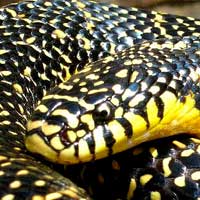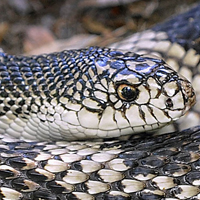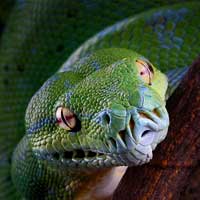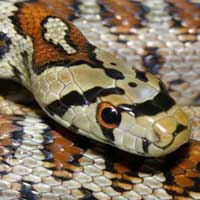Discover the Fascinating World of the Olive Python
The scientific name of the Olive Python is Liasis olivaceus, and it belongs to the Pythonidae family, which includes non-venomous constricting snakes commonly referred to as pythons.
Scientific Name: Liasis olivaceus
Snake Family: Pythonidae
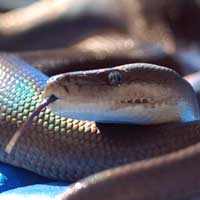
Introduction to the Olive Python
The Olive Python (Liasis olivaceus) is one of Australia’s largest non-venomous snakes, known for its smooth, olive-colored scales and robust build. Native to northern and western Australia, this python is a favorite among experienced reptile keepers for its calm demeanor and striking appearance. This guide explores everything about the Olive Python, from its natural habitat to its care requirements, making it an invaluable resource for enthusiasts and keepers alike.
Exploring the Natural Habitat of the Olive Python
The Olive Python is native to the dry and tropical regions of northern and western Australia. Its adaptability to various environments highlights its resilience as a species.
- Geographic Range: Found in the Pilbara, Kimberley, and northern Queensland regions.
- Preferred Habitat: Rocky outcrops, riverbanks, and savannas.
- Climate: Warm with significant seasonal variations in humidity and temperature.
| Region | Habitat Type | Key Features |
|---|---|---|
| Pilbara | Rocky Outcrops | Ample shelter, stable temperatures |
| Kimberley | Riverbanks | Access to water, abundant prey |
| Northern Queensland | Savannas | Open areas, warm climate |
Diet and Feeding Habits of the Olive Python
The Olive Python is a carnivorous predator that preys on a variety of animals. Its opportunistic feeding behavior makes it adaptable in the wild and manageable in captivity.
- Natural Diet: Mammals, birds, and reptiles.
- Feeding Frequency:
- Juveniles: Every 5-7 days for optimal growth.
- Adults: Every 10-14 days depending on size and activity level.
- Captive Feeding Tips:
- Offer pre-killed, thawed rodents or rabbits for safety.
- Feed at night to mimic their natural hunting behavior.
- Ensure prey size is proportional to the snake’s girth.
Behavior and Temperament of the Olive Python
The Olive Python is known for its calm and curious nature, making it a suitable pet for experienced handlers. However, understanding its behavior is essential for effective care.
- Activity Patterns: Primarily nocturnal but may bask during the day in cooler weather.
- Defensive Behavior: Generally non-aggressive but may hiss or strike if threatened.
- Interaction with Humans: Tolerates handling well when acclimated and handled consistently.
Building trust with regular, gentle handling ensures a positive experience for both the snake and the keeper.
Health and Lifespan of the Olive Python
The Olive Python can live 20-30 years in captivity with proper care. Monitoring its health and maintaining optimal environmental conditions are crucial to its longevity.
- Common Health Issues:
- Respiratory infections caused by improper humidity or low temperatures.
- Shedding problems (dysecdysis) due to insufficient humidity.
- Obesity from overfeeding or lack of exercise.
- Preventive Measures:
- Maintain humidity levels between 50-70%.
- Provide a temperature gradient with basking spots at 88°F-92°F.
- Ensure regular enclosure cleaning and routine veterinary check-ups.
Reproduction and Breeding of the Olive Python
The Olive Python is oviparous, laying eggs during the breeding season. Successful breeding in captivity requires careful environmental control and attention to the snake’s behavior.
- Mating Season: Typically occurs during the cooler months.
- Clutch Size: 12-40 eggs per clutch.
- Incubation Period: 60-70 days at temperatures of 86°F-88°F.
- Breeding Tips:
- Simulate seasonal changes to encourage breeding behavior.
- Provide a suitable nesting box with moist substrate.
- Monitor incubation conditions for optimal hatching success.
Handling and Caring for an Olive Python
Handling and caring for an Olive Python requires commitment and attention to detail. With the right care, these snakes can thrive in captivity and become fascinating companions.
- Enclosure Requirements:
- Minimum size: 8’ x 4’ x 4’ for adults.
- Include climbing branches, secure hiding spots, and a large water dish.
- Maintain proper lighting and temperature gradients.
- Handling Tips:
- Handle gently and support the snake’s entire body.
- Avoid handling during shedding or immediately after feeding.
- Wash hands before and after handling to maintain hygiene.
By meeting their specific needs, Olive Pythons can provide years of enjoyment and fascination for their keepers.



